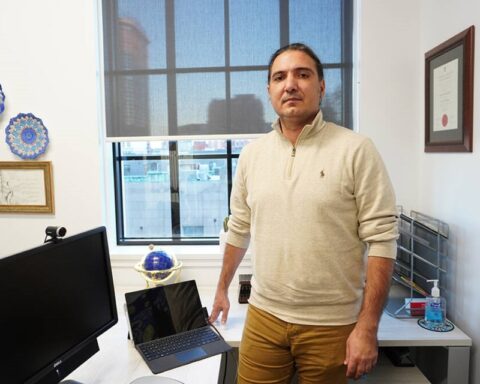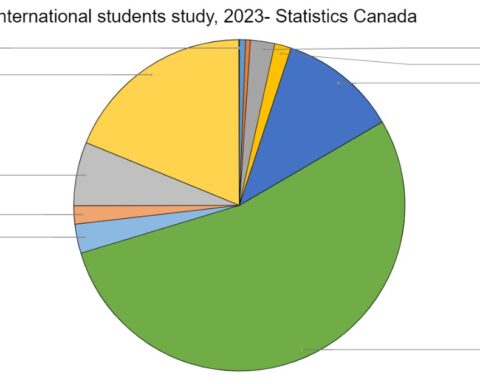Increased conflict and strife around the world combined with the massive number of international students in Canada are two factors that experts say are contributing to a surge in the number of student refugee claims.
Data from Immigration, Refugees, and Citizenship Canada (IRCC) revealed that asylum claims from study visa holders in Canada nearly tripled from 2018 to 2022.
About 15,935 student visa holders in Canada have applied for asylum in that time span. The number of asylum-seekers per year nearly tripled, rising from 1,835 in 2018 to 4,880 cases in 2022. (The IRCC report used rounded figures for privacy reasons.)
Syed Hussan, executive director of Migrant Workers Alliance for Change, says the increase is due to “worsening global conditions.” Hussan said that events like the war in Ukraine or Taliban takeover of Afghanistan can happen while students are abroad, forcing those students to make asylum claims as they can’t return home.
Al Parsai, of Parsai Immigration Services, agrees, saying this is one of two main reasons for the increase.
Firstly, an increase in global conflict in places like “Iran, especially since last year,” that continue displacing people towards countries better able to handle refugee intake, such as Canada.
Secondly, Parsai says there are 200,000 to 300,000 temporary workers in Canada, many try to get permanent residency, but some “exhaust all options” to achieve it, leaving asylum as their only option.
“That could be a factor that encourages them [international students] to apply for refugee status,” he says. “Not trying to break the rules, but because they have no other option.”
While no direct data is available for the nationality of student visa holders filing for asylum, the most prevalent nationalities requesting asylum in Canada are generally from Turkey, India, Colombia, Haiti, Mexico, and Iran.
Disproportionate claims
Canadian post-secondary institutions with the most students claiming asylum were primarily in Ontario, with Seneca College topping the list with 695 claims from 2018-2022, and Niagara College and Centennial College with 455 and 460 claims, respectively.
Parsai explained that the disproportionate amount of asylum claims from schools like Seneca is due to “(student) culture, not the school itself: one person succeeded (at gaining asylum) and then the rumor circulates; maybe some WhatsApp groups behind the scenes; it is not necessarily attached to the behavior of the college.”
This has led others like Darshan Maharaja, a journalist covering immigration in Canada, to raise concerns about fraudulent documents from international students seeking asylum. Maharaja suspects some of these applications are misrepresented in hopes of expediting permanent residency.
Speaking with NCM, Maharaja claimed that some students from the Punjabi Sikh community seek asylum in misrepresented circumstances, because once the loophole of claiming asylum is discovered by others, “the practice spreads.” As an example, Maharaja cited a video posted on X (formerly known as Twitter) of Punjab MP Simranjiit Mann talking about charging “fees” for asylum letters for those seeking residence in “the West.”
But Jasmine Gill, a lawyer with the South Asian Legal Clinic, explained in an email to NCM that “the Punjabi Sikh community has faced persecution from the Indian government, most notably during the 1984 Sikh Genocide, and this persecution continues today in various forms. These factors may create conditions in which Punjabi Sikhs feel it is appropriate for them to make a refugee claim while they are in Canada.”
NCM reached out to Jill Dunlop, Ontario’s Minister of Colleges and Universities, for comment but did not receive a reply in time for publication.
No ‘bad faith’ applications
In his opinion, Maharaja thinks Ukrainians and Syrians don’t need to misrepresent their intentions by qualifying for a student visa and then qualifying for a citizens visa once they are in Canada, because “they would have straight away got their refugee status.”
Hussan disagrees with Maharaja, explaining that “no international students came (to Canada) for asylum. If people who come to Canada as international students – and their conditions (at home) change – (then) they are eligible for asylum, and then they claim.”
Stephen Meurrens of Meurrens Law, explained in an email to NCM that “Students may file for asylum because they really don’t want to go back to their country of citizenship, and they feel like they have no other means of remaining in Canada.”
Parsai says he understands that “people produce fraudulent documents” and that “if someone applies for study permits and initially their intention was something else, that’s considered misrepresentation.” However, Parsai also found it worth noting that asylum seekers, especially Indian ones, are often not the perpetrators of fraud but the victims of it.
Hussan said there has been an effort to “create a constant media narrative of fraudulent… migration,” which he called “quite worrying,” and stressed the importance of ensuring “we aren’t spreading information from people who simply don’t have the facts.”
Lorne Putman is a writer, student and journalist from White Rock, British Columbia. His work focuses on countering false narratives, highlighting inequity, and cross-cultural stories, particularly in the South Asian diaspora. Lorne, who recently spent time in Punjab, India, is a second year political science student at Kwantlen University. In his spare time, Lorne can be found at the gym, track, or any variety of restaurants and places of worship. Lorne can be reached at [email protected].





